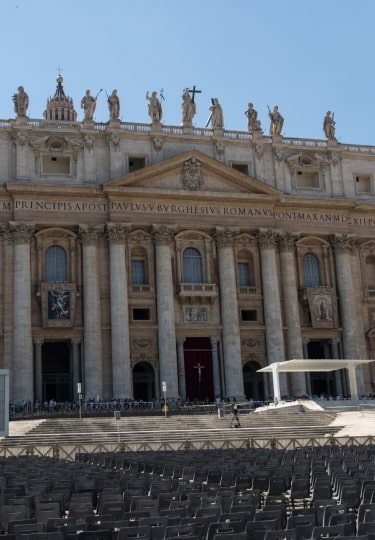Churches in Rome are more than just places of worship. They are archaeological sites and galleries of priceless art, exquisite frescoes, and mosaics.
The city’s churches take you back through history, through layers and layers of time. So don’t just limit your time in the Italian capital to art galleries. Seek out the most beautiful churches, step inside, and marvel at their extraordinary beauty.
Remember to dress respectfully, inhale the evocative scent of incense, and take time to lose yourself among some of the world’s great art treasures.
Here are 10 of the most beautiful churches in Rome to discover.
The Sistine Chapel
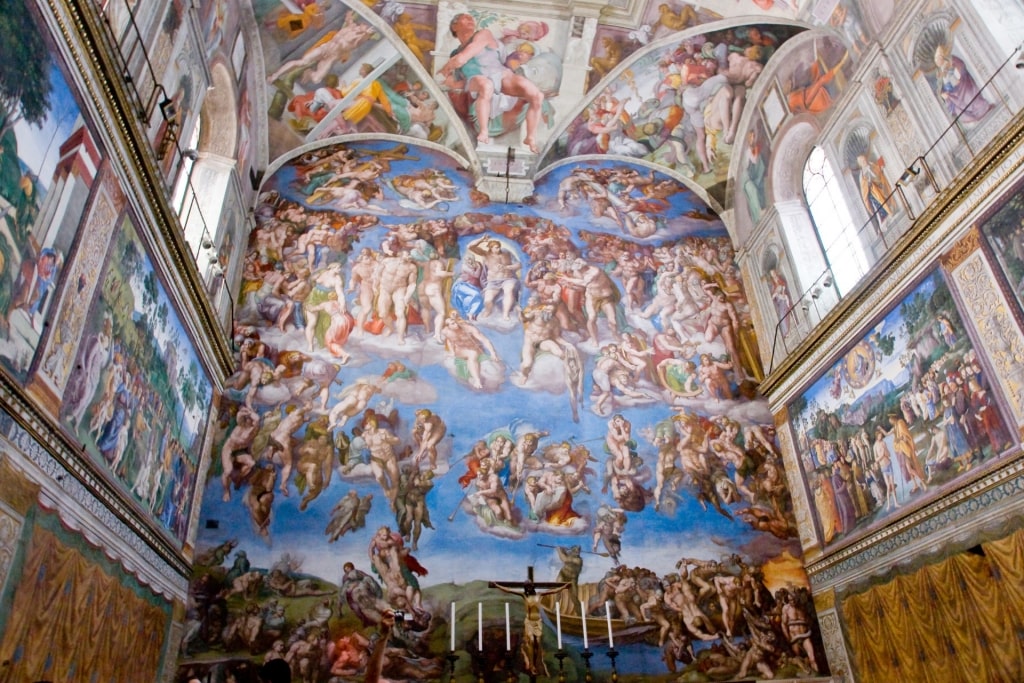
The Sistine Chapel
Part of the Vatican Museums, the Sistine Chapel is one of the most important places of worship in Rome. It’s here that conclaves take place to elect new popes, and where popes are baptized. The choir here is one of the oldest in the world, having been in existence for 1,500 years.
What the chapel is best known for, though, is the beautiful frescoes by Michelangelo, which cover the ceilings and the back wall above the altar.
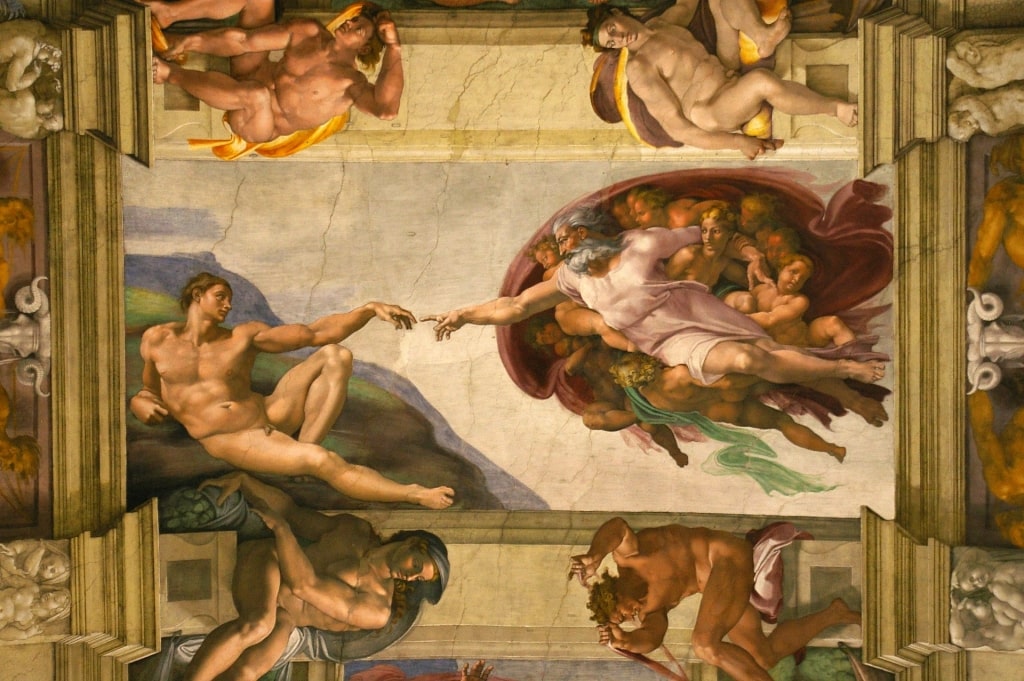
The Creation of Adam Photo by Levan on Wikimedia Commons, licensed under CC BY-SA 3.0
The Creation of Adam, the most famous fresco, is instantly recognizable. The vaulted ceiling, also by Michelangelo, is simply jaw-dropping in its beauty and genius.
Take time to study The Last Judgment, another Michelangelo work, painted between 1536 and 1541.
If you take a guided tour, which is advisable, your guide will point out all the characters in this complex piece, which is powerful and somewhat gruesome at the same time.
Look for the figure of St. Bartholomew, just below Christ, holding a flayed human skin; the face on this character is a self-portrait by Michelangelo himself.
Read: Best Museums in Rome
St. Peter’s Basilica
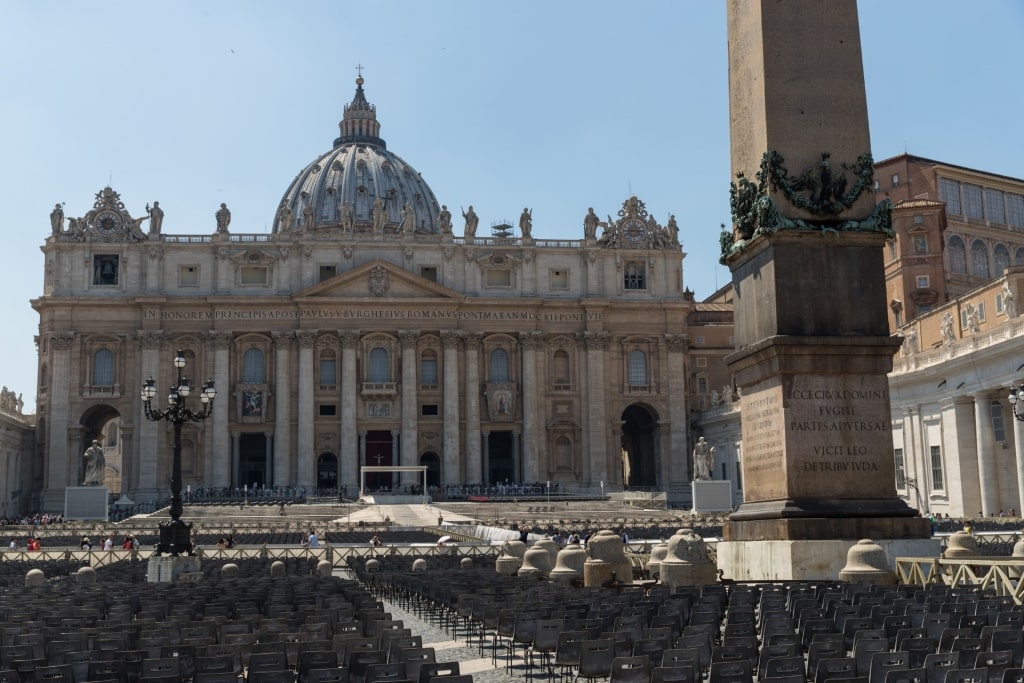
St. Peter’s Basilica
Dominating the Vatican, St. Peter’s Basilica is, without doubt, one of the most lavishly beautiful and impressive churches in the world.
It’s also one of the largest, with a capacity of more than 60,000. The sheer size is awe-inspiring; step inside and look up, and you won’t be able to look away. If you want to climb up into the vast dome, be prepared to ascend 554 steps.
St. Peter’s was built on top of a fourth-century structure and took 120 years to complete. The church marks the spot where St. Peter is believed to have been killed by Emperor Nero in AD64. His tomb is inside, two levels below ground.
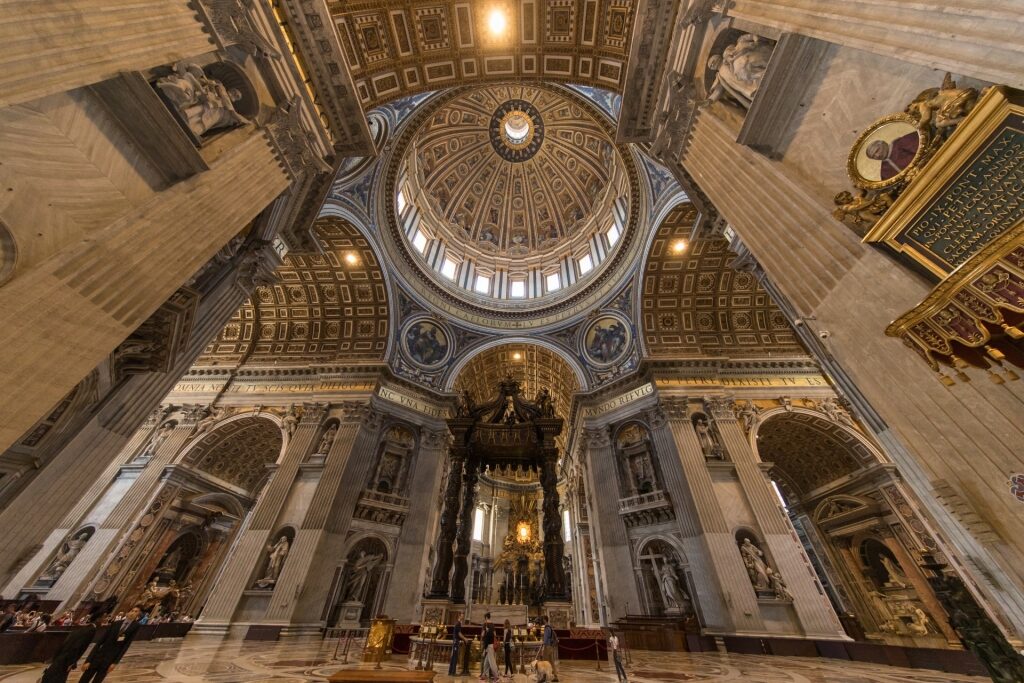
St. Peter’s Basilica
There’s incredible art at every turn, but St. Peter’s most famous works include the dome, the work of Michelangelo, and the artist’s Pietà, a statue of Jesus and his mother, Mary, so intricate and beautifully formed that you can barely believe it’s made of marble. Today, it’s protected by bullet-proof glass.
The basilica is also famed for Bernini’s Baldachin, a magnificent bronze canopy, 95 feet high, behind the altar.
The Pantheon / Basilica of St. Mary and the Martyrs
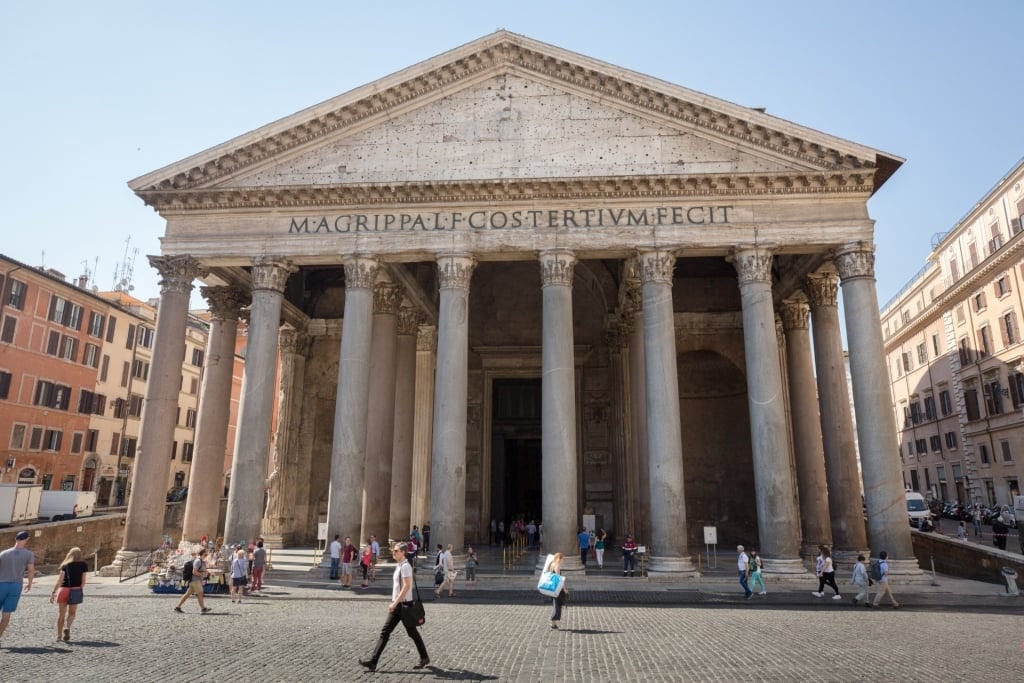
The Pantheon
The Pantheon is as famous for its architecture as for the beauty of its interior. The dome on this church is the largest unreinforced concrete structure in the world, and what’s most remarkable is that it’s stood in this spot for some 2,000 years.
The Pantheon was originally a pagan structure, built by Hadrian as a temple to all gods (“pan” means all and “theos” gods). It was consecrated by the Catholic Church in 608 AD. Its official name is Basilica of St. Mary and the Martyrs.
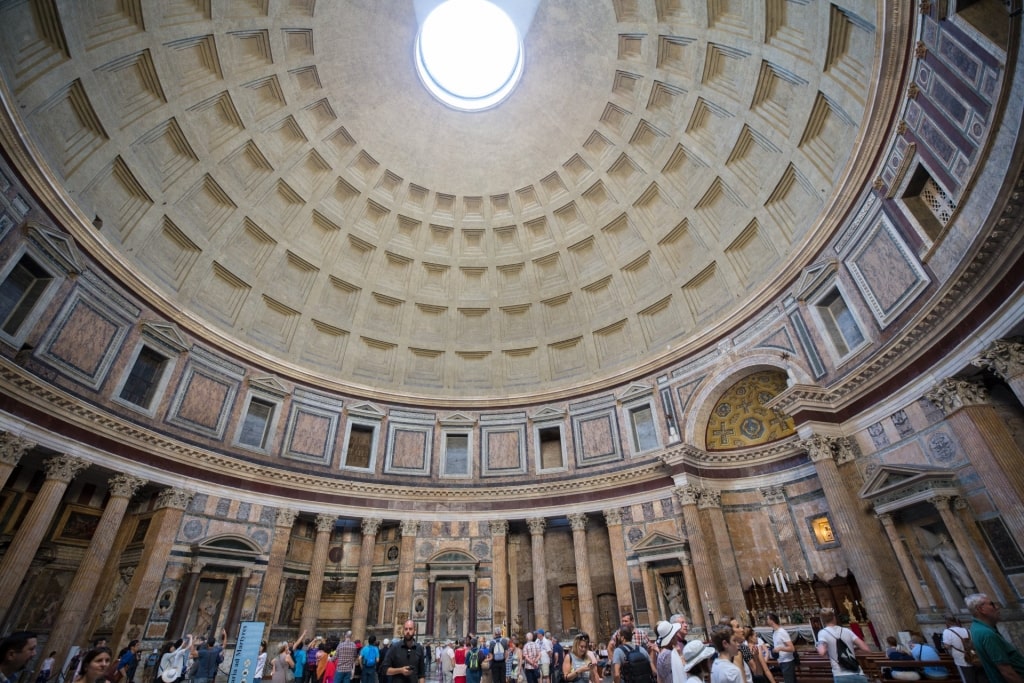
Basilica of St. Mary and the Martyrs
What’s interesting about this Roman landmark is that it has a 28-foot oculus, or opening, in the ceiling, exposed to the elements. This hole was deliberately incorporated into the original structure to allow visitors to the then temple a view of the heavens.
When sunlight streams in, the intricate marble interior is lit, although rain can also enter, so be careful where you stand on a wet day. As you wander around, look out for the tomb of the great artist Raphael, as well as two kings, Vittorio Emanuele II and Umberto I.
Come here on a Sunday and you can attend Mass, although you will need to be modestly dressed and you will be expected to attend the service, not wander around.
Santa Maria Maggiore Basilica
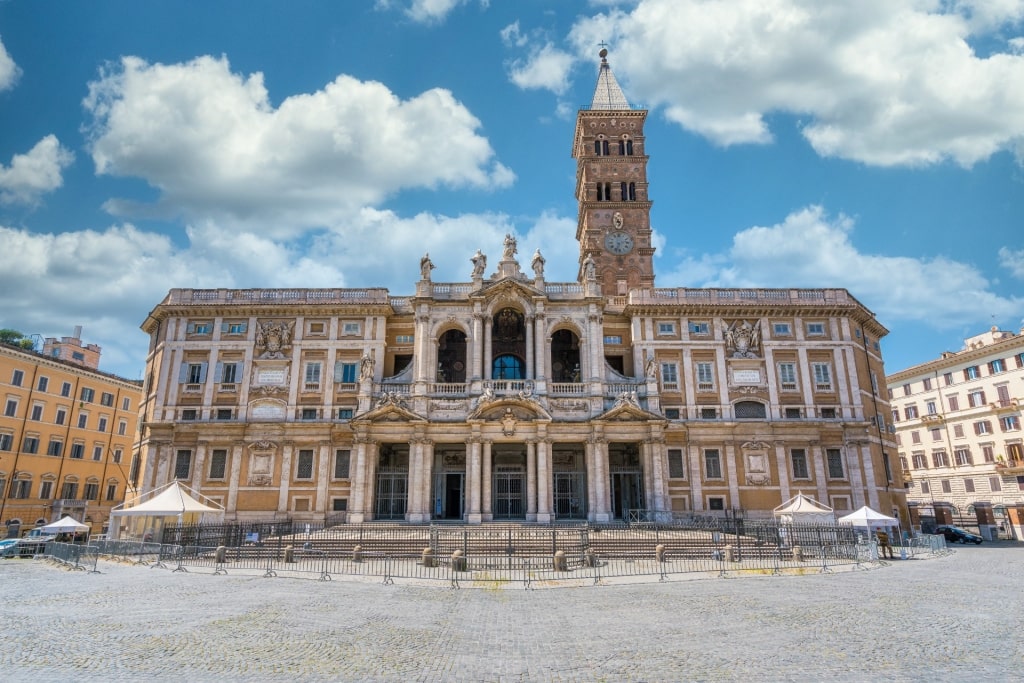
Santa Maria Maggiore Basilica
Explore Rome off the beaten path and see one of the city’s four main basilicas, which are churches granted special privileges by the Pope. Santa Maria Maggiore was built in the fifth century and sits on top of Esquiline Hill, one of Rome’s seven hills.
It’s here that snow is alleged to have fallen in AD58, in the middle of summer. This event is recreated on August 5th every year, with thousands of white petals fluttering down from the ceiling.
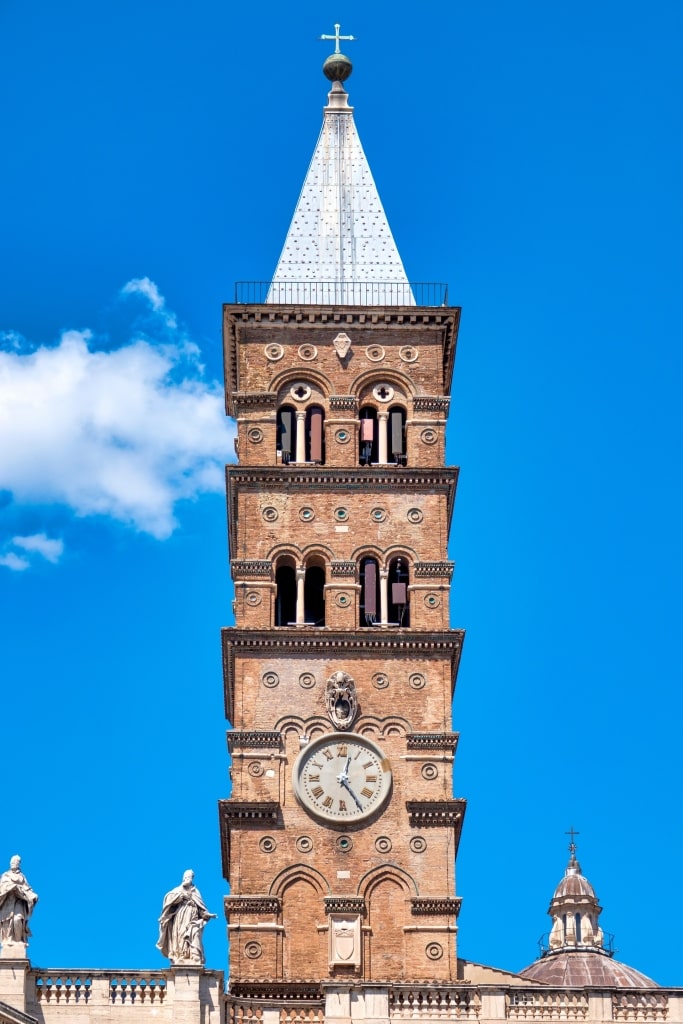
Bell tower of Santa Maria Maggiore Basilica
The church has been added to over the centuries, and today combines a variety of styles. The Romanesque campanile, or bell tower, is the tallest in the city at 246 feet, and dates to the 14th century.
The shimmering facade is mainly baroque in style, adorned with mosaics from the 13th century. The spectacular mosaics inside date back to the fifth century and depict scenes from the Old Testament.
The altar is said to conceal the relics of St. Matthew, while to the right, a stone marks the burial place of the sculptor Gian Lorenzo Bernini, and his father, Pietro.
Look out for the two smaller chapels: Sistina, where two popes are buried; and Sforza, which was designed by Michelangelo.
Basílica de Santa Cecilia en Trastevere

Basílica de Santa Cecilia en Trastevere
Like many churches in Rome, this beautiful basilica has a gory past. It is dedicated to St. Cecilia, the patron saint of music, who was tortured and martyred in a house here in 230 AD for trying to convert her husband and brother to Christianity.
According to legend, Pope Urban I had Cecilia buried here and consecrated the space, which later became a basilica.
But centuries on, nobody knew exactly where the tomb was located. The saint appeared to Pope Pasquale I and revealed the exact location, and a new church was built. Some elements, including the cloister and the bell tower, were added later.

Basílica de Santa Cecilia en Trastevere Photo by Livioandronico2013 on Wikimedia Commons, licensed under CC BY-SA 4.0
The mystery deepened when, in 1599, the tomb of St. Cecilia in the catacombs was opened to reveal her body, perfectly preserved and intact (something of a miracle given that she had been decapitated).
Sculptor Stefano Maderno was commissioned to create a marble statue in this exact position, which now lies under the altar. Look out for the beautiful fresco of The Last Judgment, painted by Pietro Cavalini in the 13th century and considered one of the finest works in the church.
San Clemente Basilica
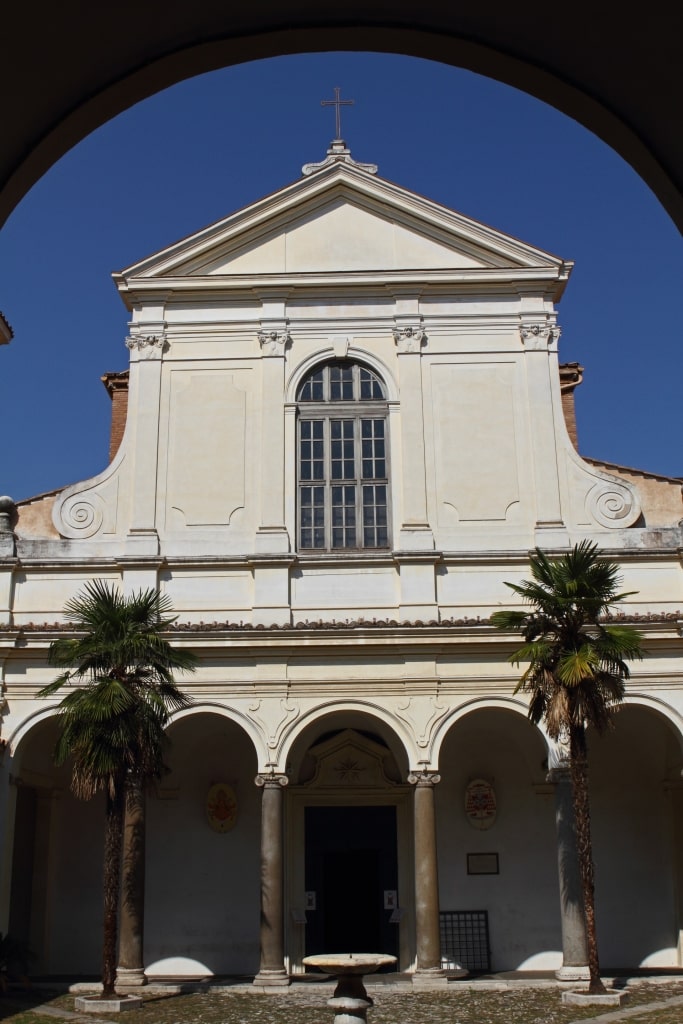
San Clemente Basilica
Located close to the Colosseum, San Clemente Basilica is typical of Rome in that it’s built upon layer and layer of history.
The original structure was a first-century house, which is still visible today, some 60 feet below the present-day ground level. On top of this, a pagan temple was erected in the second century and in the fourth century, a church was built, with the Basilica added in the 12th century.
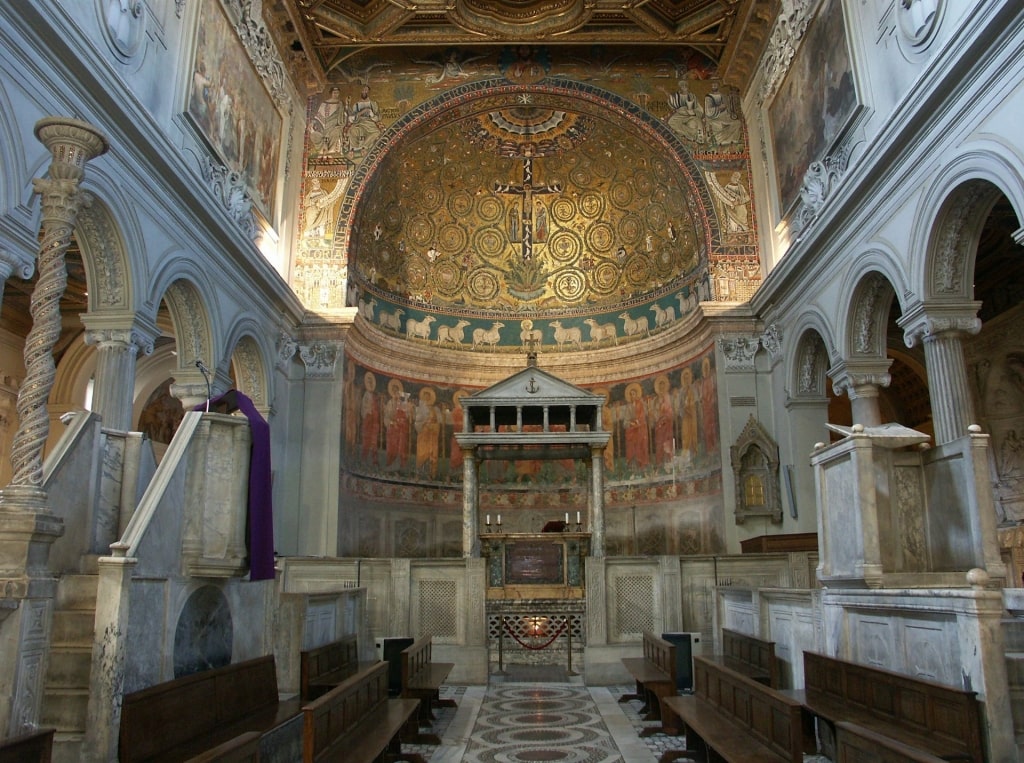
San Clemente Basilica Photo by Dnalor 01 on Wikimedia Commons, licensed under CC BY-SA 3.0
There are several highlights to look out for during your visit. In the apse, there’s a shimmering mosaic, Trionfo della Croce, which dates back to the 12th century. It shows Jesus on a cross which turns into a living tree.
After admiring the mosaic, descend downwards through time to the basilica below, where you can still see some frescoes dedicated to San Clemente, a first-century pope.
Under this, in the darkness, are the remains of the pagan Temple of Mithras, with the altar intact, and finally, the house. The rushing of a hidden underground river only adds to the spine-tingling atmosphere.
Basilica di San Giovanni in Laterano
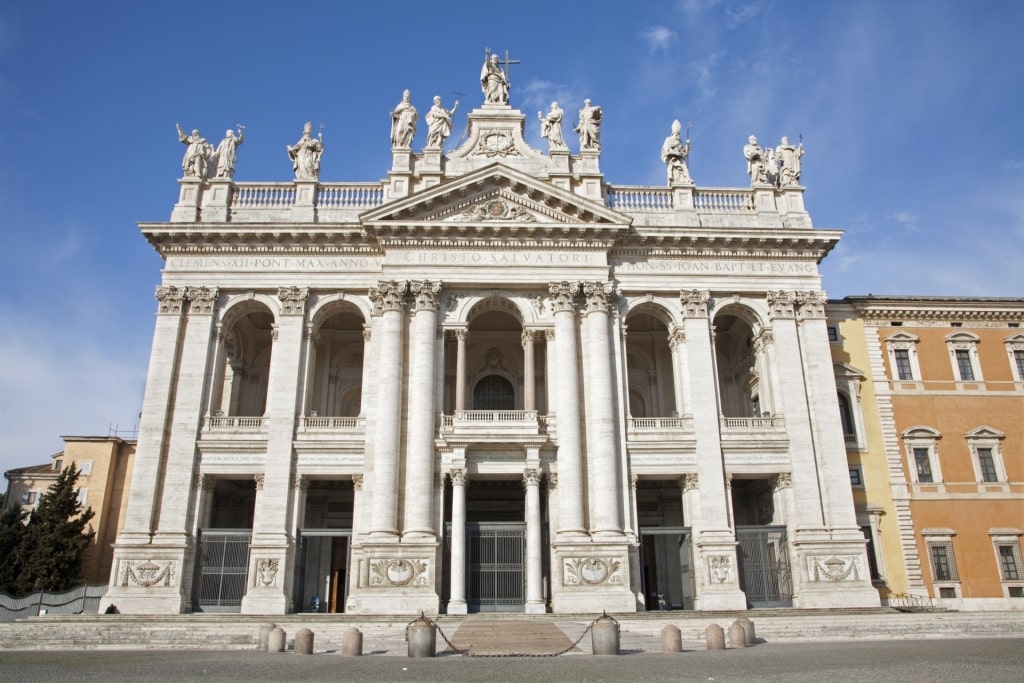
Basilica di San Giovanni in Laterano
Of all the cathedrals in Rome, San Giovanni in Laterano is the most important. In fact, it’s Rome’s official cathedral and the current seat of the Pope.
The original church was commissioned by Emperor Constantine in the fourth century. For centuries, it was one of the most important places of worship in Rome.
But little remains of the original due to a series of fires, earthquakes, and general vandalism. What you see today is mainly renovations from the 16th and 17th centuries in the Baroque style.
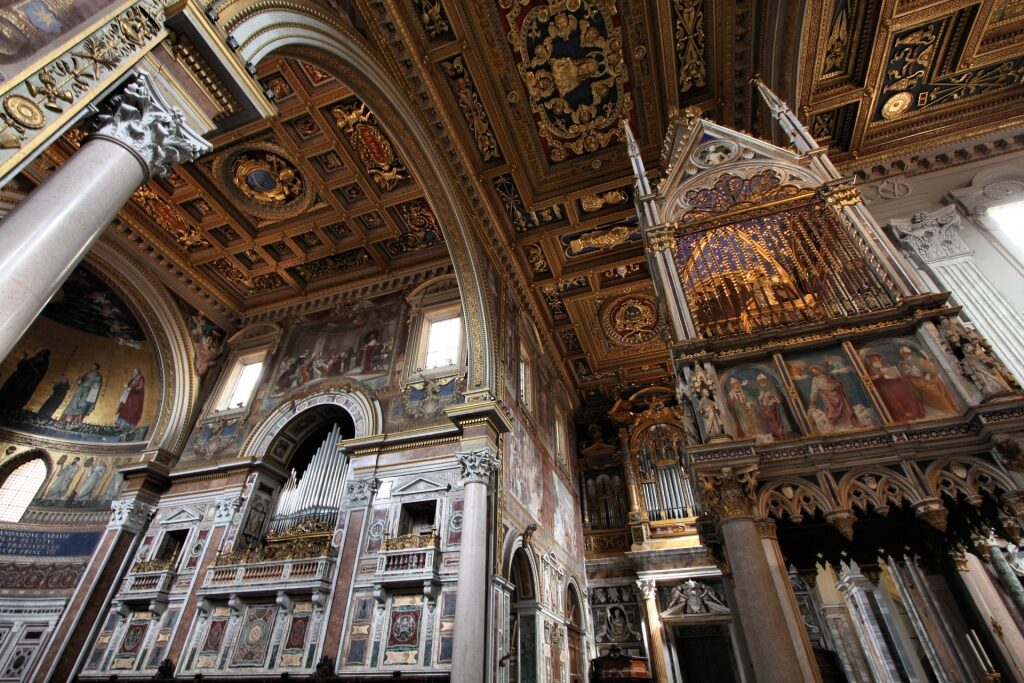
Basilica di San Giovanni in Laterano
The facade is especially impressive, dominated by towering statues of Christ, St. John the Baptist, John the Evangelist, and the apostles, while the interior gleams with gilt and elaborate mosaics.
Further religious artifacts are housed in the small Museu de Tesoro on site, while twisted columns, arches, and bas reliefs surround a pretty cloister.
Santa Maria Sopra Minerva
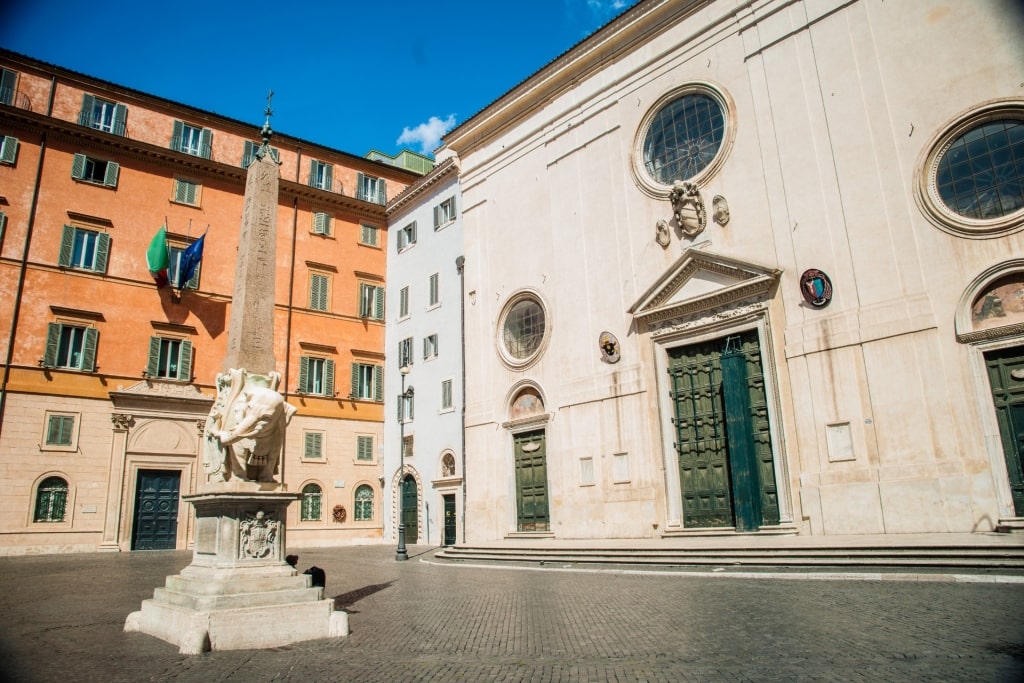
Santa Maria Sopra Minerva
As the name suggests, this vast basilica sits on top of (sopra) the ruins of a temple dedicated to Minerva, who was the Roman goddess of wisdom.
In fact, the church, situated in the Centro Storico, lies over the ruins of three temples dedicated to Minerva, the Egyptian goddess, Isis, and Serapis, another Egyptian god.
What’s different about this church is that it’s Gothic in style, as opposed to the mainly Baroque architecture in Rome.
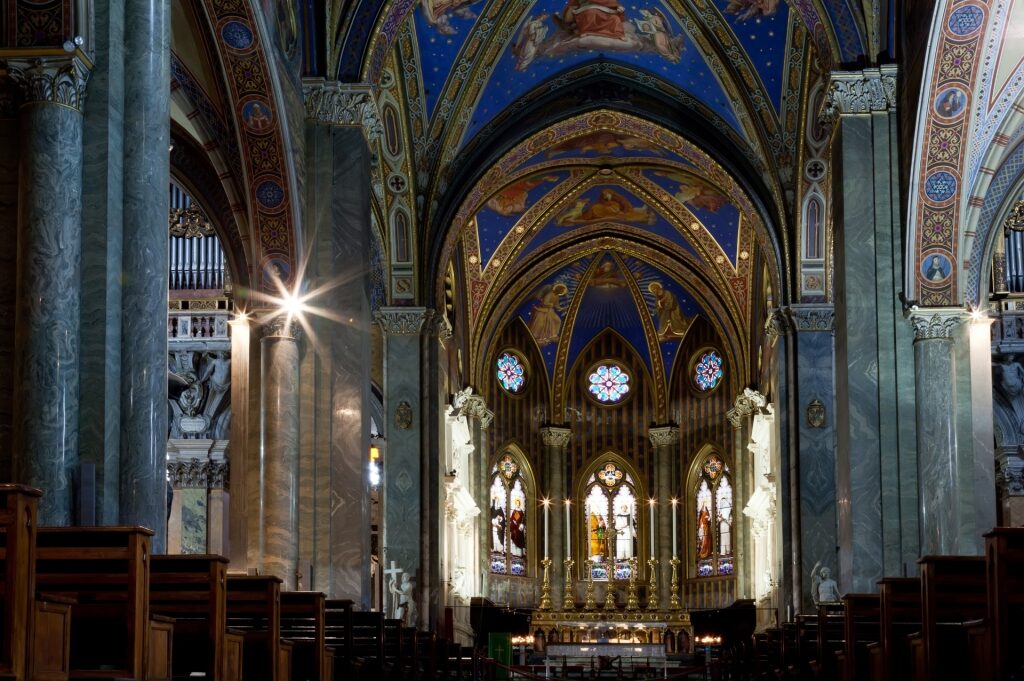
Santa Maria Sopra Minerva
Inside, you can admire the brilliant blue vaulted ceiling and exquisite frescos by Filippino Lippi in the Capella Carafa.
There’s a sculpture by Michelangelo depicting Christ bearing the cross, and several important tombs, not least that of St. Catherine of Siena, although the saint’s head remains in Siena itself.
Santa Maria del Popolo
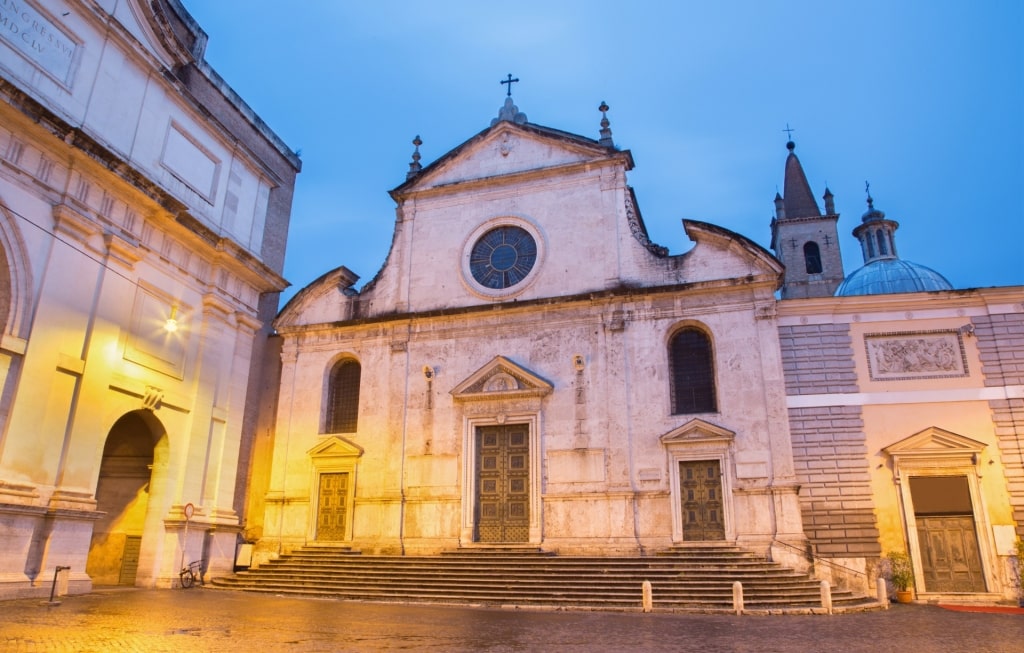
Santa Maria del Popolo
While this church on the Piazza del Popolo isn’t as ornate as some from the outside, it conceals a treasure trove of art, with work by Raphael, Bernini, and Caravaggio, among others.
It has a strange backstory, too. Emperor Nero is said to be buried here, and locals in the 11th century were alarmed by his ghost, which many believed haunted the area. The church was built in 1099 to exorcize the ghost, and renovated again in the fifth and 17th centuries.
Artworks to look out for include The Conversion on the Way to Damascus and The Crucifixion of St. Peter by Caravaggio, both astonishing in their use of light and almost photographic quality, and Caracci’s Assumption of the Virgin.
Basilica Papale San Paolo fuori le Mura
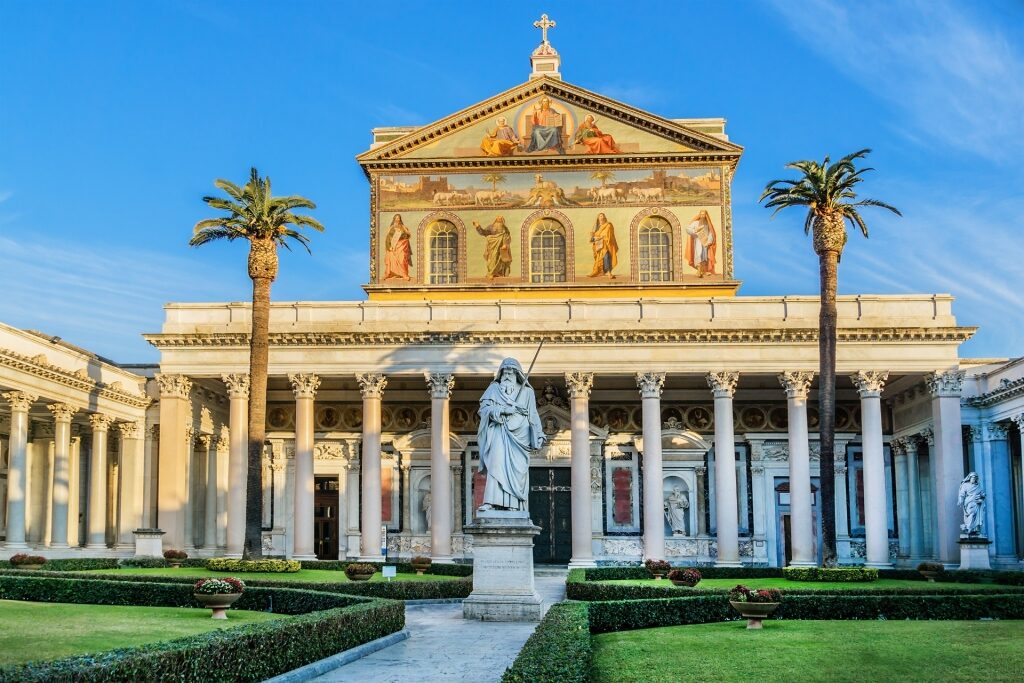
Basilica Papale San Paolo fuori le Mura
Also known as St. Paul Outside the Walls, this enormous basilica on the south side of the river Tiber in the Ostiense neighborhood in Rome is the third-largest church in the world and the largest in the city after St. Peter’s. It marks the spot to the south of the city where St. Paul was buried in AD67.
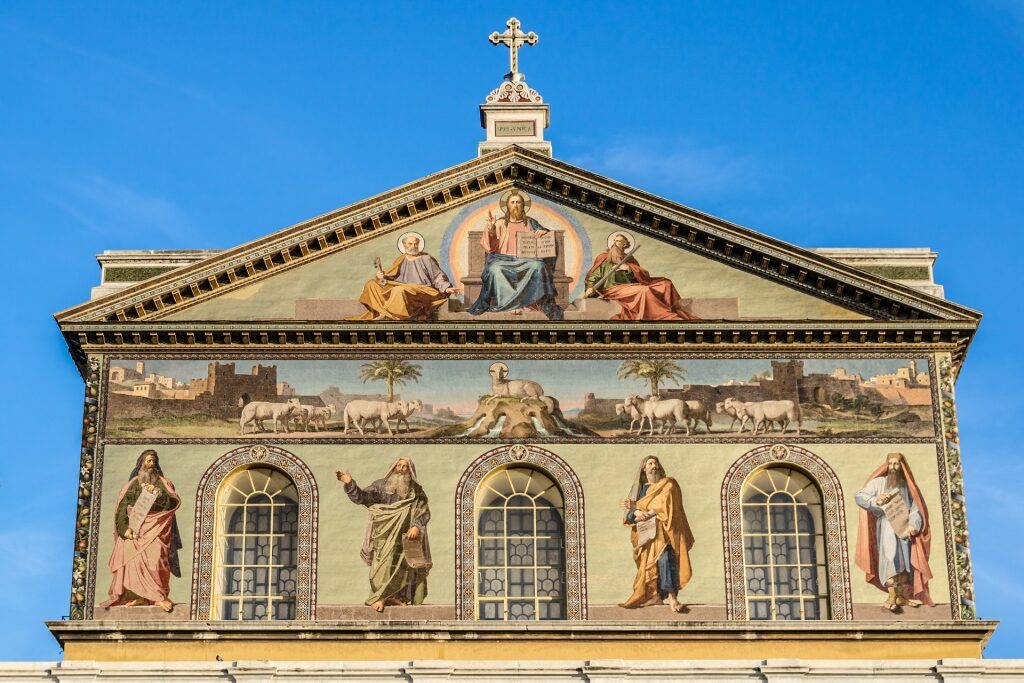
Basilica Papale San Paolo fuori le Mura
The original church was built by Constantine in the fourth century, but much of it was destroyed by fire in 1823, so most of what you see today is a reconstruction. This doesn’t take away from the beauty of the golden mosaics on the exterior, though.
They were designed by Filippo Agricola and Nicola Consoni in the late 19th century and depict the prophets (Isaiah, Jeremiah, Ezekiel and Daniel) and a scene showing the Lamb of God on a mound from which four rivers flow.
Twelve lambs, representing the apostles, drink from the rivers. In the background, Jerusalem and Bethlehem are shown, with Jesus between St. Peter and St. Paul above the whole scene.
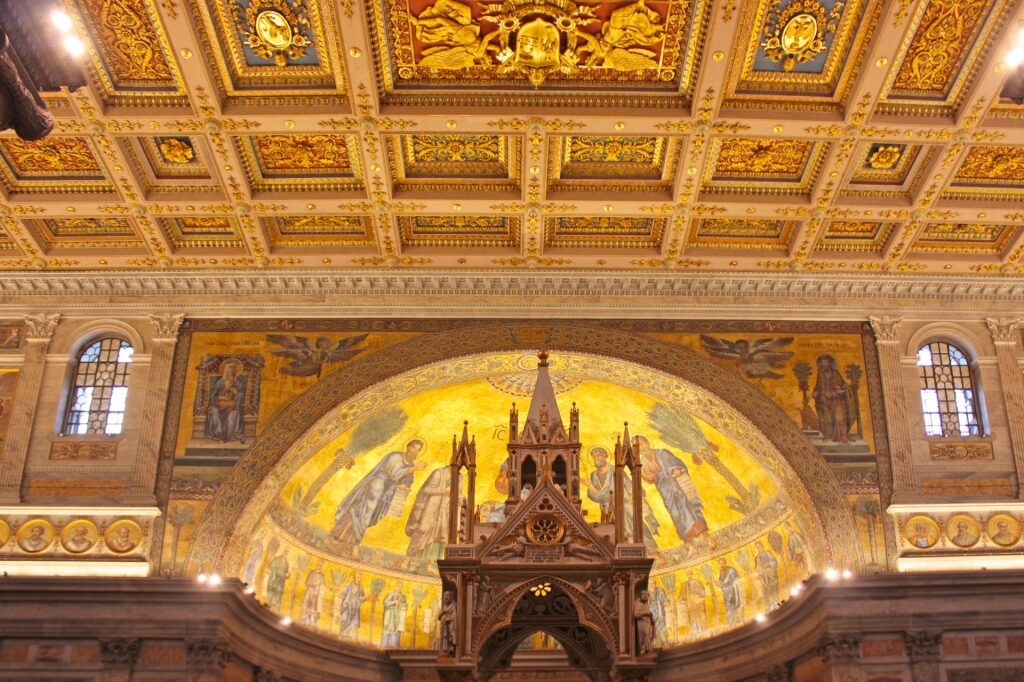
Basilica Papale San Paolo fuori le Mura
Inside, the church is, unsurprisingly, wildly ornate. A grand Papal altar, only used by the Pope, stands over the tomb of St. Paul. You can wander around the serene cloister, too, and visit the old pharmacy on the site, which stocks traditional herbal medicines.
Read: Shopping in Rome: The Ultimate Guide
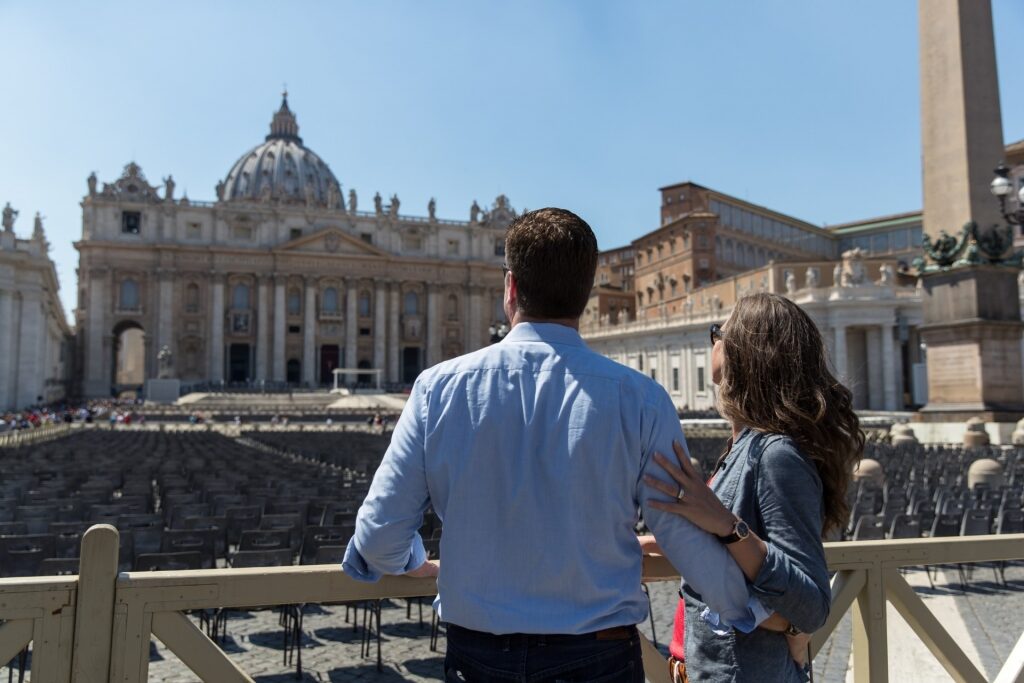
St. Peter’s Basilica
Are you inspired to explore these magnificent churches in Rome? Then browse our cruises to Rome here and plan your European getaway.
